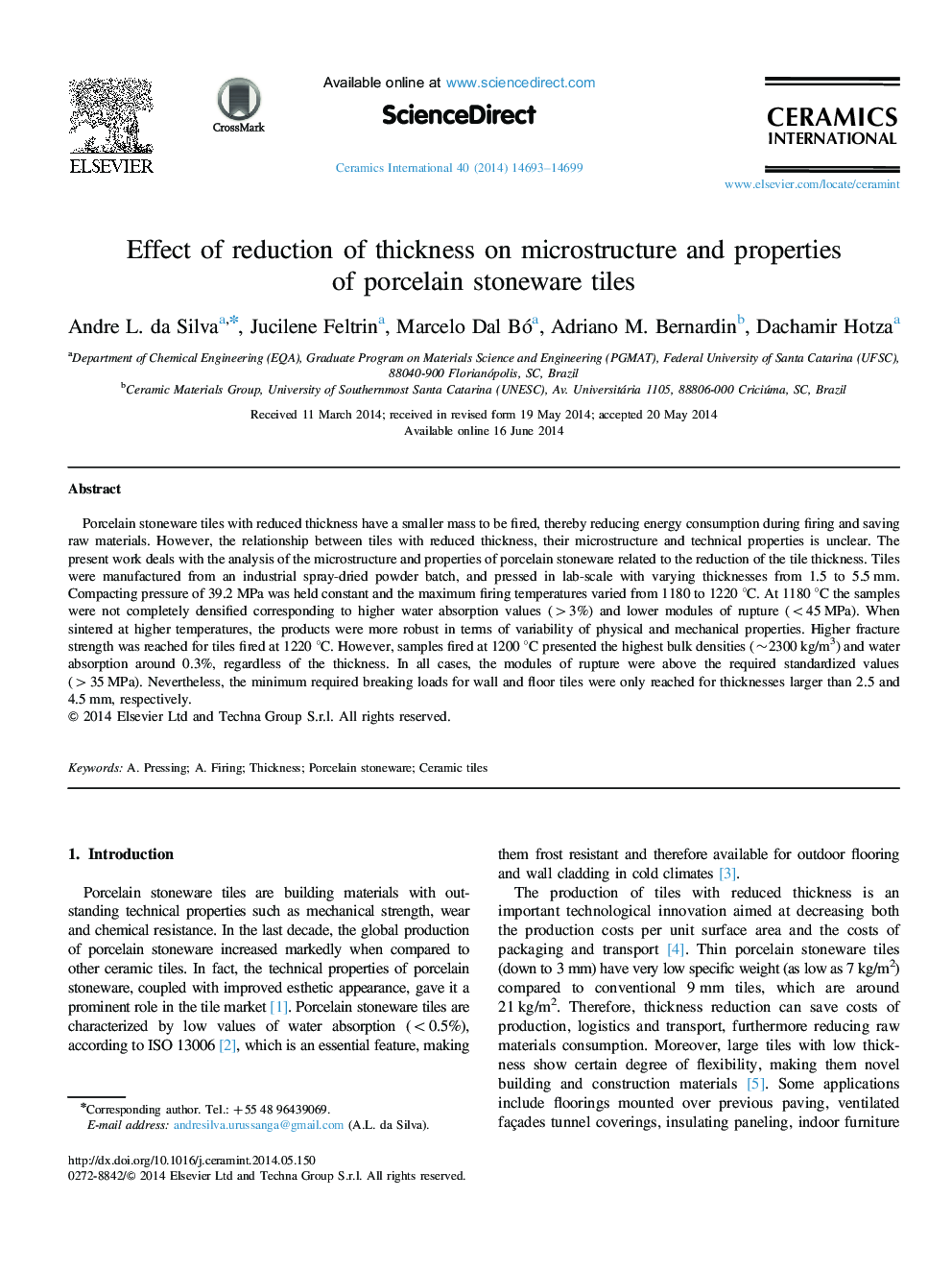| Article ID | Journal | Published Year | Pages | File Type |
|---|---|---|---|---|
| 1461209 | Ceramics International | 2014 | 7 Pages |
Porcelain stoneware tiles with reduced thickness have a smaller mass to be fired, thereby reducing energy consumption during firing and saving raw materials. However, the relationship between tiles with reduced thickness, their microstructure and technical properties is unclear. The present work deals with the analysis of the microstructure and properties of porcelain stoneware related to the reduction of the tile thickness. Tiles were manufactured from an industrial spray-dried powder batch, and pressed in lab-scale with varying thicknesses from 1.5 to 5.5 mm. Compacting pressure of 39.2 MPa was held constant and the maximum firing temperatures varied from 1180 to 1220 °C. At 1180 °C the samples were not completely densified corresponding to higher water absorption values (>3%) and lower modules of rupture (<45 MPa). When sintered at higher temperatures, the products were more robust in terms of variability of physical and mechanical properties. Higher fracture strength was reached for tiles fired at 1220 °C. However, samples fired at 1200 °C presented the highest bulk densities (~2300 kg/m3) and water absorption around 0.3%, regardless of the thickness. In all cases, the modules of rupture were above the required standardized values (>35 MPa). Nevertheless, the minimum required breaking loads for wall and floor tiles were only reached for thicknesses larger than 2.5 and 4.5 mm, respectively.
